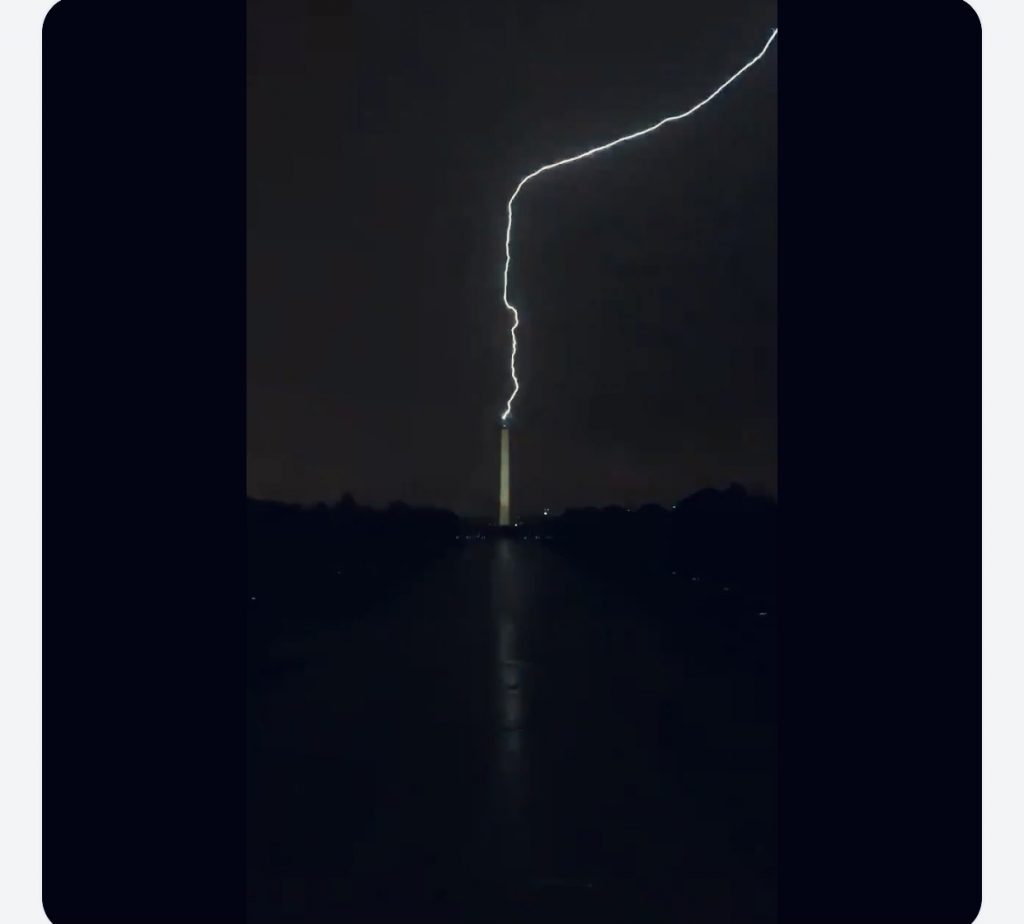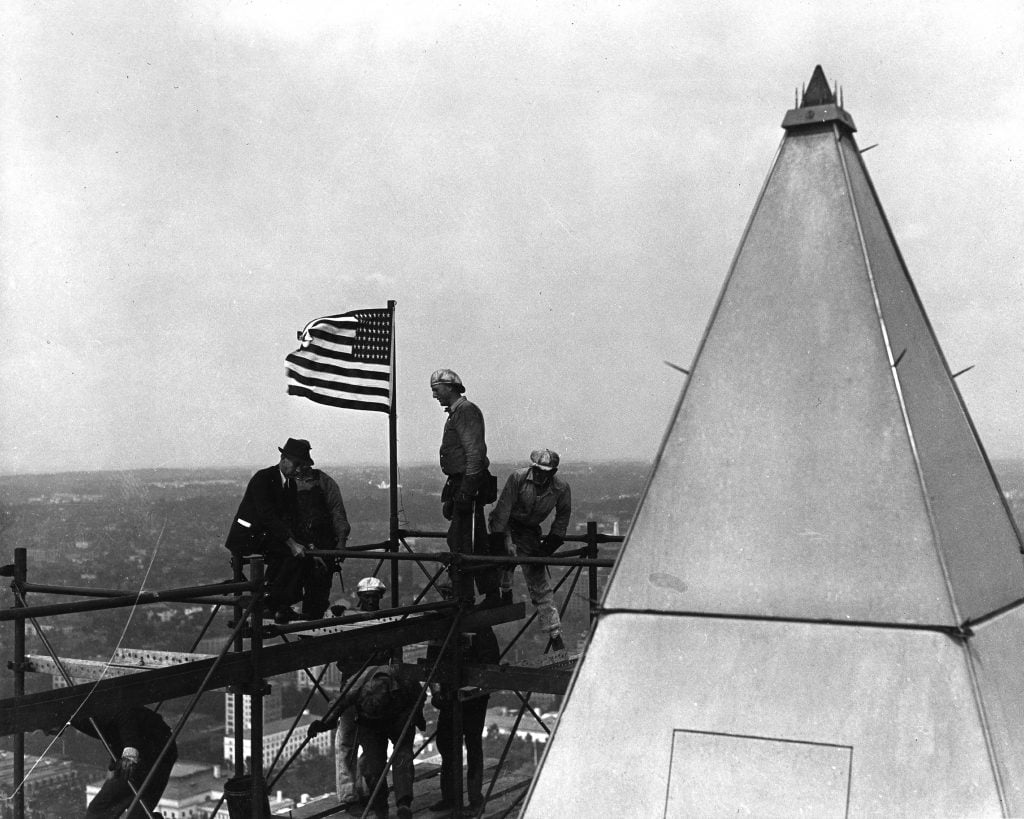Art World
A Spectacular Bolt of Lightning Struck the Washington Monument, Temporarily Closing the Famed Obelisk to Visitors
No one was hurt in the lightning strike.

No one was hurt in the lightning strike.

A bolt of lightning struck the tip of the Washington Monument on Sunday night, taking out the obelisk’s elevator system and forcing a temporary closure.
A spokesperson for the National Park Service, which oversees the monument, told Artnet News that the elevator system was the only casualty of the storm, and that the structure itself did not sustain any damage. No one was injured in the incident.
UPDATE: The Washington Monument will be closed today as we repair damage to the electronic access system caused by Sunday morning’s lightning strike. #WashingtonDC https://t.co/HD6U35C66n
— National Mall NPS (@NationalMallNPS) August 16, 2021
According to a report in the Washington Post, a combination of anecdotal and scientific analysis found that the monument is struck “twice per year on the high end and once every five years on the low end.”
The 554-foot statue, made of granite, marble, and bluestone gneiss, was the world’s tallest structure from 1884 through 1886, when it lost the designation to the Eiffel Tower in Paris.

Works Progress Administration workmen install new platinum lightning rods atop the Washington Monument, Washington, DC, 1930s. (Photo by PhotoQuest/Getty Images)
The original lightning protection system installed on the monument, which consisted of a single aluminum apex within the pointed tip, was installed in 1884. A lightning strike the following year damaged the marble blocks of the pyramidion tip. Further adjustments to the system were carried out in the 1930s.
In 2013, the system was discarded and replaced with two solid aluminum lightning rods sticking out of the top of the pyramid and attached to the east and west sides of the marble capstone, according to the National Geodetic Survey.
Authorities say they hope to reopen the National Mall, where the monument lives, on Wednesday. The monument had only just reopened in mid-July after a six-month pandemic-related closure.